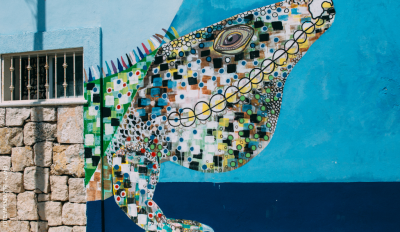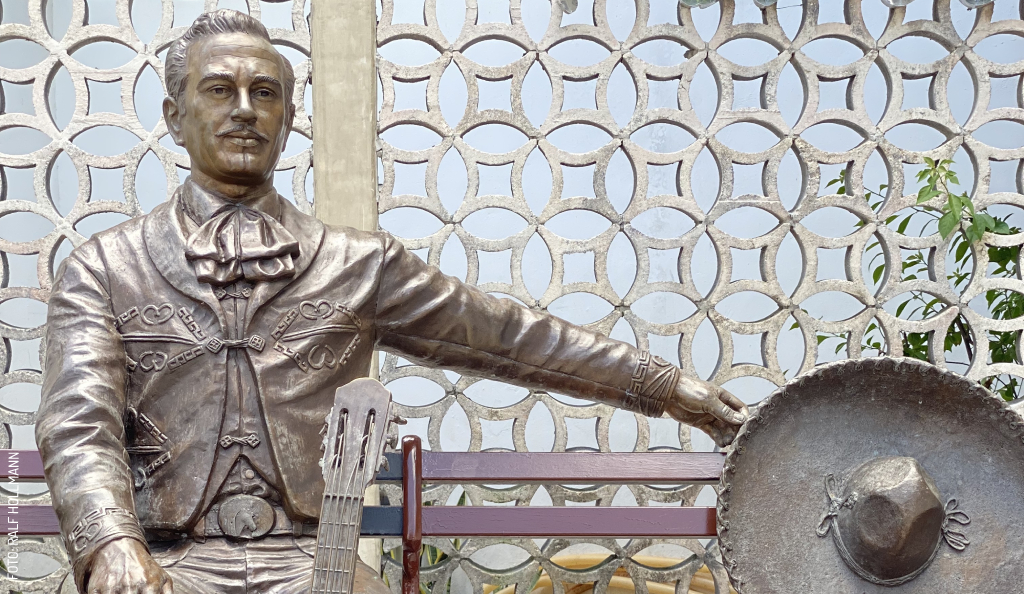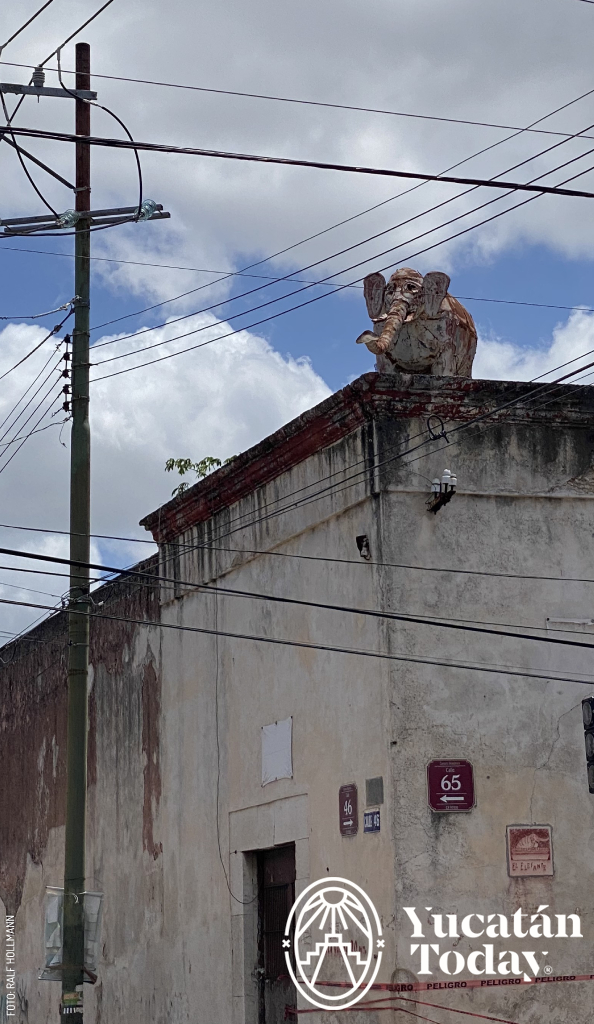Every city has a few lesser-noticed landmarks or “hidden corners.” Here are five favorites in the city of Mérida.
Maya Stones in a Catholic Church
Across from Mérida’s Parque Hidalgo, which tourism behemoth kayak.com describes as being in the “heart of Coyoacán district,” is Tercera Orden church. About two meters up the wall facing Calle 59 between 60 and 58, are two very obviously Maya glyphs etched into the stones. This proves beyond the shadow of a doubt that this city was built not only on a Maya city site but with the same stones of the buildings found therein. The Spanish architects in charge of building the houses of “the one true God” were not particularly appreciative of the intricately carved stones they “borrowed” from the demolished façades of the grand Maya structures and would generally turn the sculpted sides inwards, to hide them from view. These two pieces did not suffer that fate and remain as a visible reminder of how one culture superseded another.
An Elephant on a Roof
The corner of 65 and 46, in the bustling and somewhat run-down part of Mérida’s downtown, is known to many as “La Esquina del Elefante” (The Elephant Corner). This is because it was home to a well-known commercial enterprise called, you guessed it, El Elefante, whose heyday was the 1830s.
To make his business stand out, owner Pedro Gamboa had a replica of an elephant made and placed on the roof. This custom was quickly adopted by other merchants who also came up with distinctive elements for their roofs or façades, to better attract potential customers. One of the businesses that Señor Gamboa ran out of this building was dedicated to extracting dyes from logwood (Palo de Tinte). This was a valuable product during that time as the reddish-brown color obtained was used extensively by the textile industry in Europe. His business also treated the very first shipments of Henequén (sisal) to be exported.
Mexican Film Star in Mérida
There is an imposing bronze statue of film star Pedro Infante in Mérida, who is holding what looks like an Oscar in one hand; he is also seated upon a horse. The Oscar, it turns out, is the Mexican equivalent - an Ariel.
 You may have heard of this Mexican idol, who sang his way into many movies during the 1930s and 40s while crooning a romantic tune on horseback. An avid pilot and fan of the city, he would visit Mérida often. In April of 1957, he was co-piloting a cargo flight back to the big city when, just after takeoff he lost control of the plane and it crashed into a lot on the outskirts of Mérida, killing him and the other crew members.
You may have heard of this Mexican idol, who sang his way into many movies during the 1930s and 40s while crooning a romantic tune on horseback. An avid pilot and fan of the city, he would visit Mérida often. In April of 1957, he was co-piloting a cargo flight back to the big city when, just after takeoff he lost control of the plane and it crashed into a lot on the outskirts of Mérida, killing him and the other crew members.
A second statue of a seated Pedro Infante, complete with guitar and Charro hat, is a few blocks away in a tiny park built to commemorate his life and work.
A Costco with a Cenote
In the land of cenotes, Mérida has a very unique Costco in that there is a pretty little cenote ( no, you can’t swim in it!) in the parking lot. It’s a great selfie photo op, with the Costco logo behind you. Forget the roast chicken, this loss leader is much more original and you’ll probably go inside to buy something less than necessary and in great quantities.
If you are a purist who frets that Costco is not part of your Yucatán visit plans, keep in mind that right next door is the massive Museo del Mundo Maya (although it is currently closed), which you can use as justification in response to potential travel-shaming social media trolls.
Art on the City Walls
In the neighborhood known as Xcalachén, near the cemetery and once known for being the local “meatpacking” district, an urban renewal program contemplated the decoration of large walls with murals by local graffiti artists. The results are stunning and range from colorful representations of local flora and fauna to imagery related to the Maya world and more than one beautifully rendered human face.

Author: Ralf Hollmann
A bonafide Yucatecan born in Germany and raised in Canada, with a degree in Hospitality and Tourism from the British Columbia Institute of Technology and an occasional source of sometimes-deserved snark, Ralf has experience traveling, leisure tourism, copyediting, creative writing. He also plays the guitar and enjoys taking photos. IG: ralf.around.the.world
Receive the latest articles and much more from the best of Yucatán in your email!
Related articles
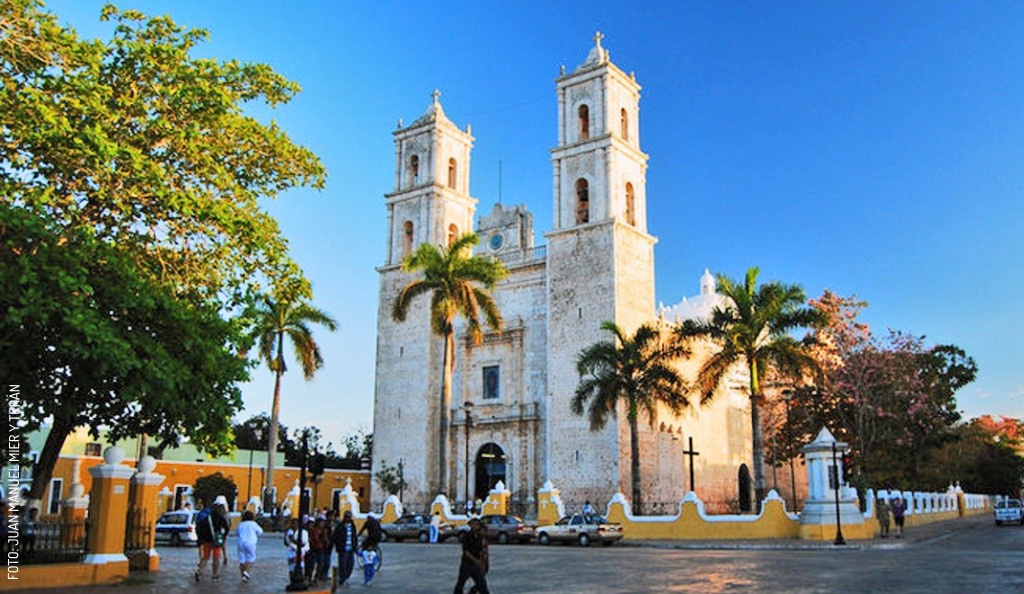
The Profanation of the San Servacio Church in Valladolid: A Bloody Secret
Discover the bloody secret of the Church of San Servacio in Valladolid: a double homicide that forced its reorientation.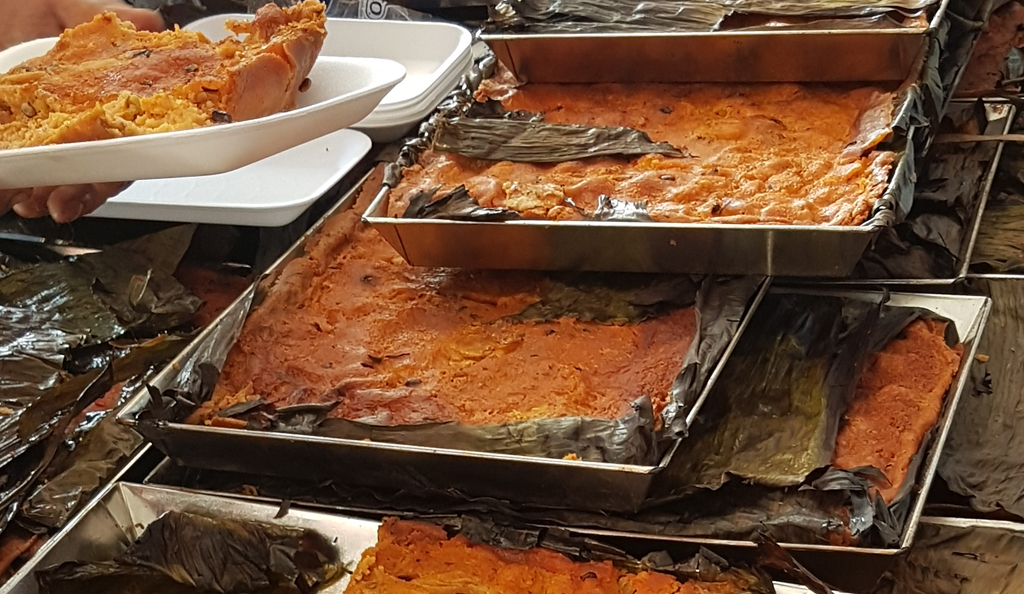
Yucatecan “Soul Food” for Janal Pixan
Something that definitely brings us joy are the traditional dishes of this season and the Hanal Pixán celebrations in Yucatán, get to know them all!